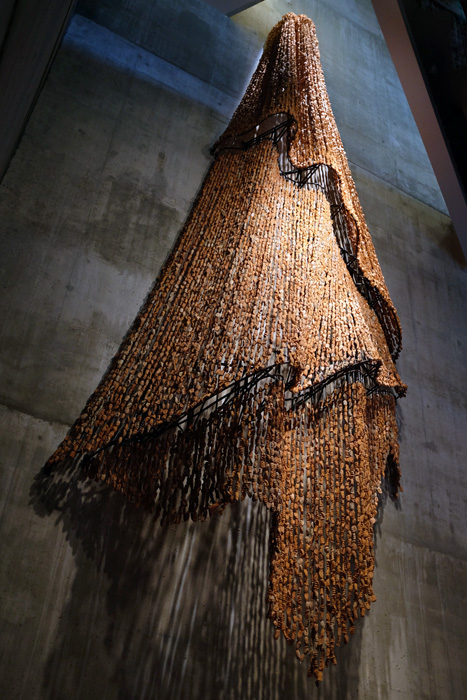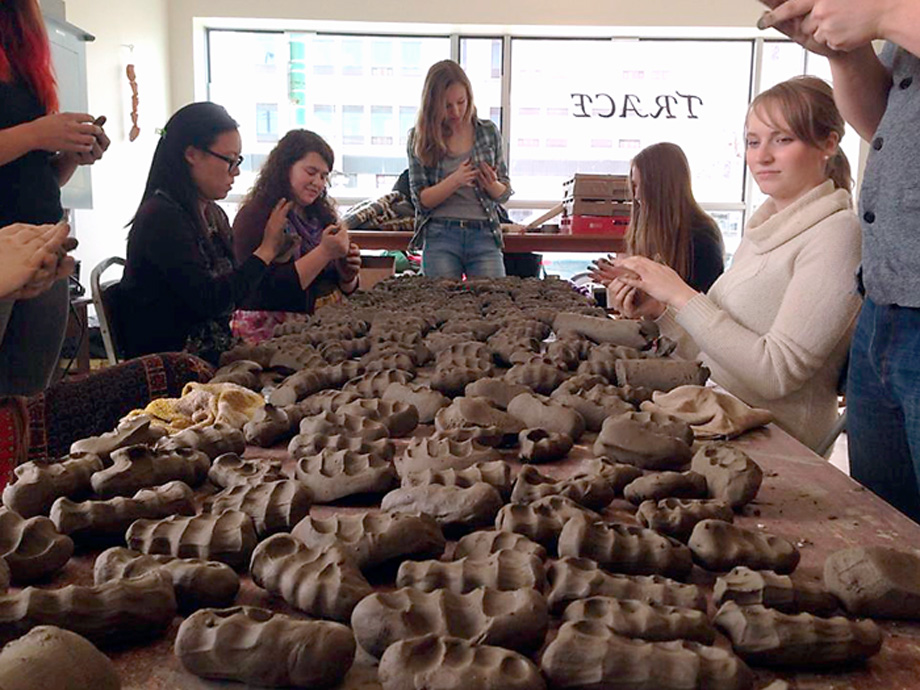With the creation of the large ceramic blanket, trace, Belmore honours the original inhabitants of the land upon which the Canadian Museum for Human Rights is built. This land bears evidence of over 6,000 years of Indigenous presence where 500,000 artifacts were excavated from the ground beneath the museum, including thousands of ceramic shards. Using clay from beneath the city of Winnipeg, thousands of small “shards” will be formed by hand. The action of squeezing a small lump of clay in one hand will produce an organic shape that will be pierced through the centre to become a “bead”. These shapes, although unique, will identify as being similar due to the hand-made process and because of their vast number. The beads will then be fired and woven together to produce the large-scale blanket-like form. The use of clay, the earth itself, imbues the artwork with a sense of timelessness. The modest gesture of forming these beads is a reminder of how precious and universal the bond is between humans and the earth.
Lee-Ann Martin, Rebecca Belmore’s trace: Hands of generations past and those that will come, 2014
Photo credit: Theo Pelmus




